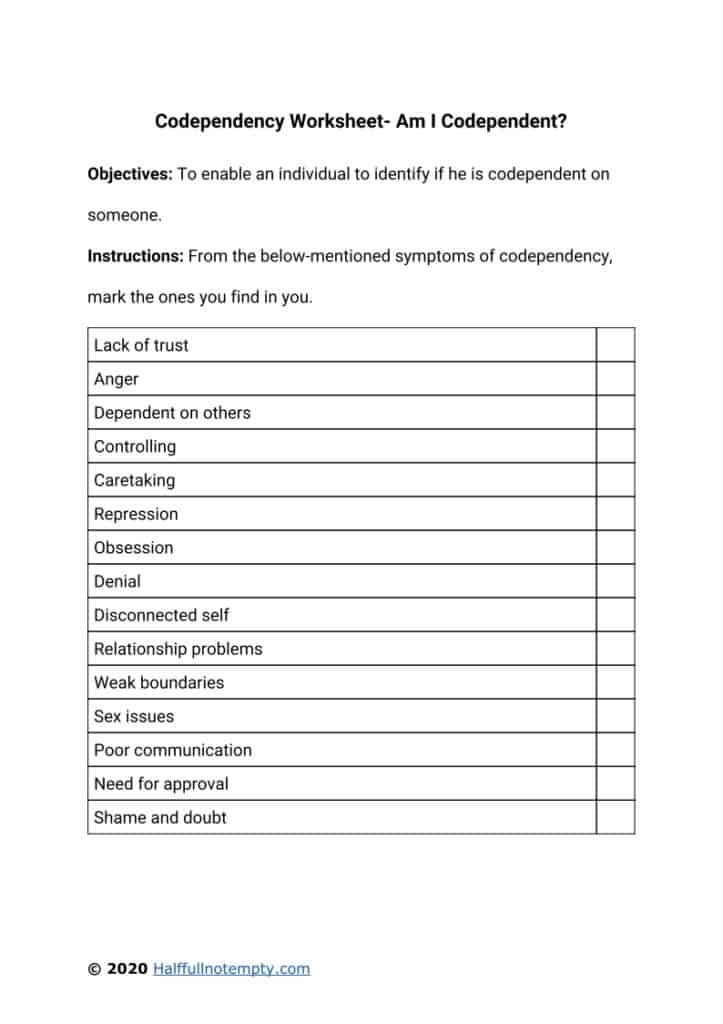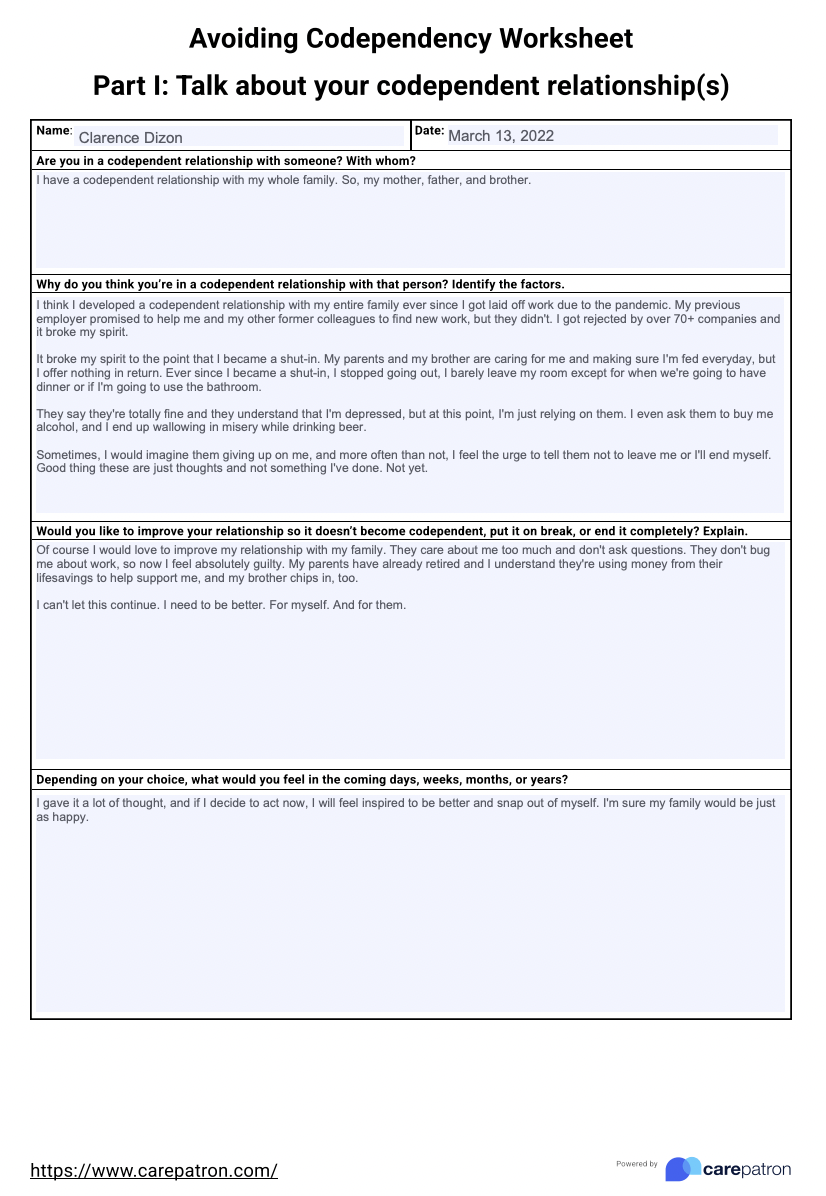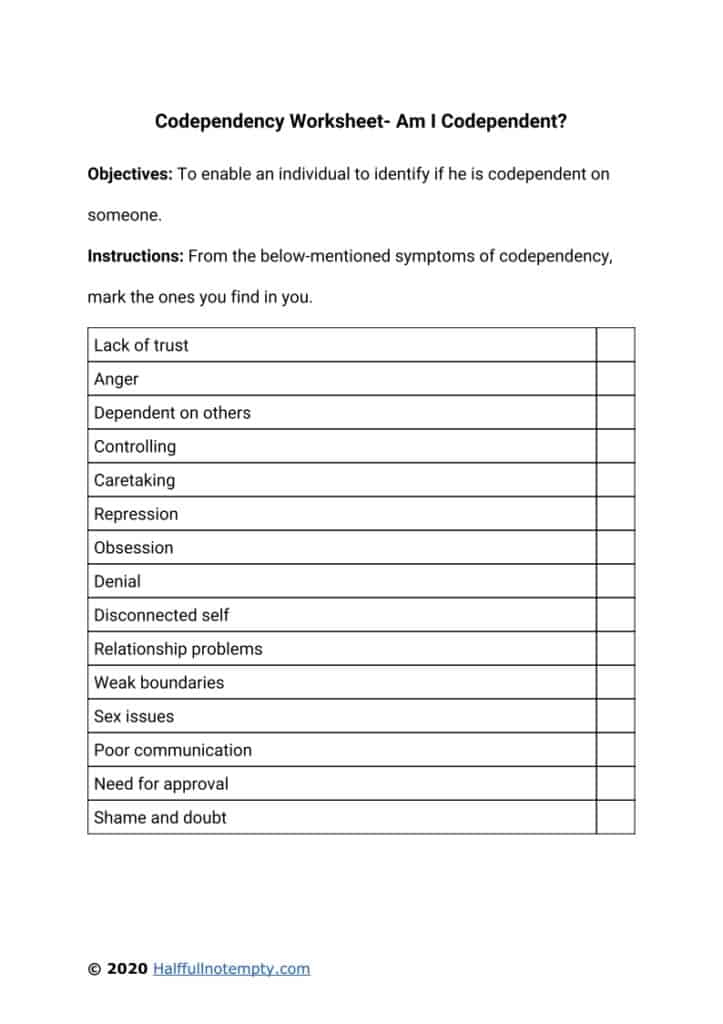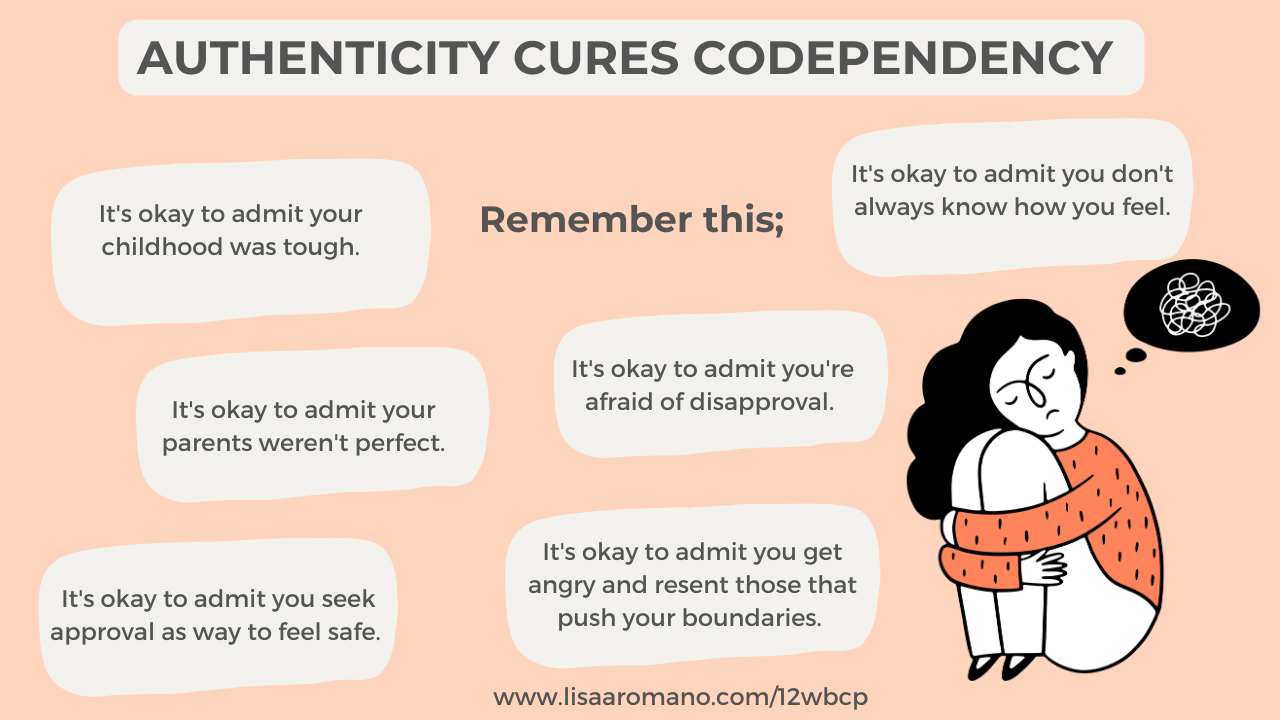5 Worksheets to Heal Codependency Fast

Codependency can be a challenging issue, often sneaking into our lives in such subtle ways that it might take a while before we even realize it's there. But once recognized, it's crucial to address and heal from it for healthier, more balanced relationships and personal well-being. In this post, we're diving into five specific worksheets designed to tackle codependency effectively and with empathy. These worksheets are crafted to foster self-awareness, promote boundary-setting, and encourage healthier relationship dynamics. Let's explore how each worksheet works and how you can incorporate them into your journey towards emotional health.
Understanding Codependency


Before jumping into the worksheets, it's beneficial to have a clear understanding of what codependency entails:
- Definition: Codependency often involves being overly preoccupied with others' needs to the detriment of one's own, often at the cost of personal identity, emotional stability, and self-esteem.
- Signs: You might notice people-pleasing behaviors, difficulty making decisions, fear of being alone, or sacrificing your own needs for those of others.
- Causes: It can stem from family dynamics, societal pressures, or past traumatic experiences where unhealthy boundaries were the norm.
Worksheet 1: Identifying Codependent Behaviors

This worksheet helps you recognize patterns in your behaviors that might signal codependency:
| Behavior | Example | Alternative Healthy Behavior |
|---|---|---|
| Putting others' needs first | Skipping social events to care for someone else's needs | Balancing self-care with caring for others |
| Fear of rejection | Avoiding confrontations to not lose someone | Engaging in honest communication |
| Difficulty setting boundaries | Agreeing to do things out of guilt | Clearly stating what you're comfortable with |

💡 Note: This worksheet is about recognizing patterns. It's a step towards understanding how these behaviors impact your life and relationships.
Worksheet 2: The Boundary Setting Sheet

Boundaries are vital in healing codependency. Here's a guide on how to establish and communicate them:
- What Boundaries Look Like: Define what a healthy boundary looks like for you in different areas (emotional, physical, mental, etc.).
- How to Communicate Boundaries: Practice scripts for communicating these boundaries assertively and respectfully.
- Consequences of Crossed Boundaries: Decide on the actions you'll take if your boundaries are not respected.
Worksheet 3: Self-Care Inventory

Self-care is often neglected by those who struggle with codependency. This worksheet helps you track and plan:
- Current Self-Care Activities: What are you doing now to care for yourself?
- Areas to Improve: What do you neglect, and why?
- Goals for Self-Care: Set specific, achievable goals for the week or month.
🌱 Note: Remember, self-care is not selfish. It's about maintaining your health to be able to support yourself and others effectively.
Worksheet 4: Affirmations and Reframing Thoughts

Affirmations can rewire our thought patterns from codependency towards self-love and independence:
- Negative Belief: "I am not important unless I am helping others."
- Affirmation: "I am valuable and worthy of care, regardless of how much I do for others."
- Thought Reframing: Practice catching negative thoughts and reframing them into positive or neutral ones.
Worksheet 5: Relationship Analysis

Evaluate your relationships to identify codependent dynamics:
- How I Feel: Document how you feel in each relationship.
- Balance of Care: Assess the balance of caregiving in the relationship.
- Boundary Health: Rate how well boundaries are respected.
In your path to healing from codependency, these worksheets offer practical steps to reclaim your independence and identity. They foster an environment of self-reflection, boundary establishment, and self-care, which are crucial for building healthy relationships. The journey might not be easy, but the reward of healthier, more fulfilling relationships with yourself and others makes it worth every effort. Each worksheet addresses different facets of codependency, providing tools to help you evolve from the patterns of the past towards a future of emotional health and personal strength.
How often should I revisit these worksheets?

+
You might want to review and update your worksheets weekly or monthly, depending on your personal progress and how quickly you feel changes are happening in your behavior and relationships.
Can these worksheets help if I’m in therapy for codependency?

+
Absolutely. These worksheets can complement therapy by providing structured self-reflection tools that can enhance the work you’re doing with your therapist.
What if I struggle with the affirmations?

+
It’s normal to struggle initially. Try practicing affirmations regularly, maybe daily, and over time, they will start to feel more natural as your belief in them grows.



